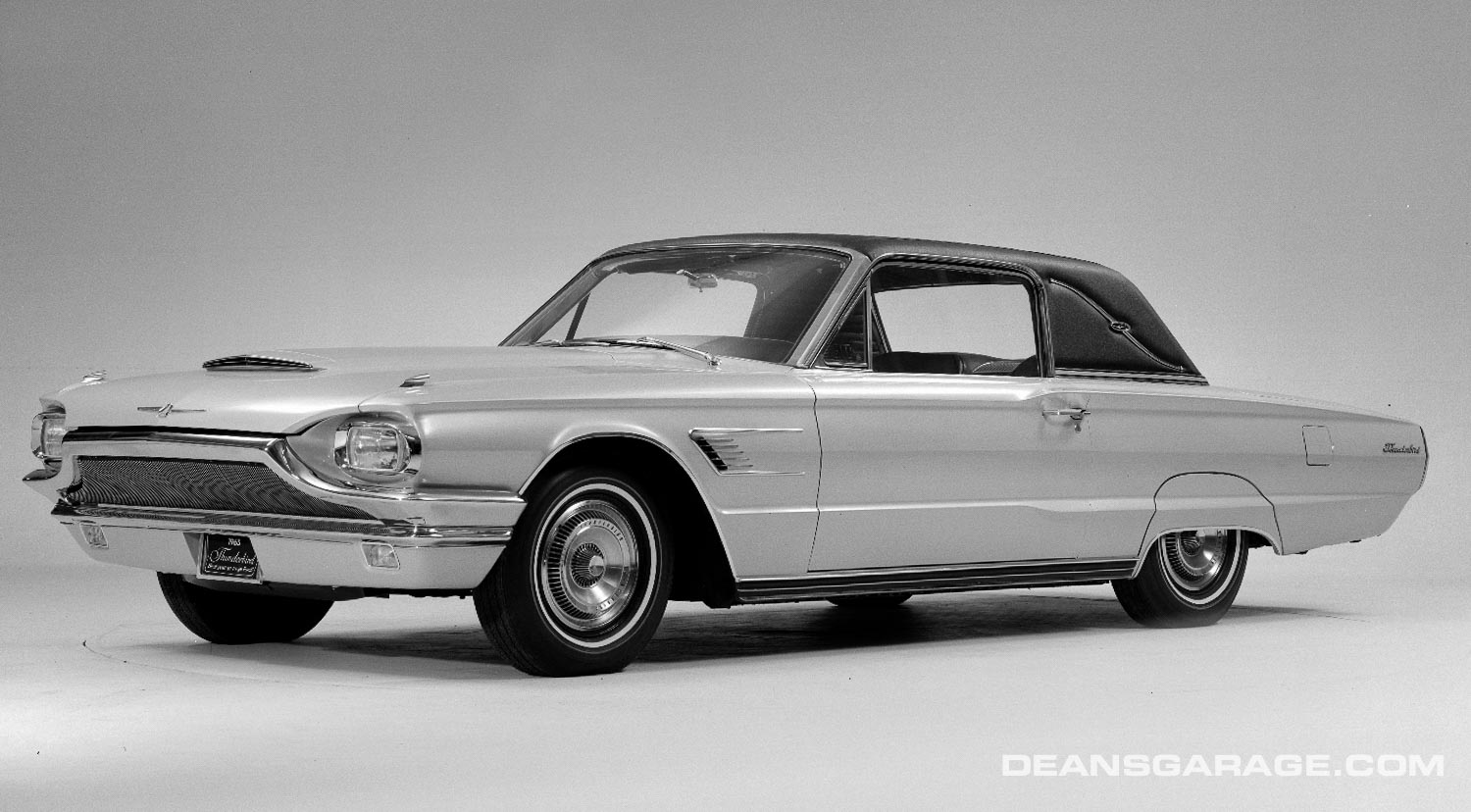
A Flair for the All-new ’64 Thunderbird, Part Two
By Todd Duhnke
This story was published in the January-February issue of The Thunderbird Scoop magazine. Condensed and re-printed by permission.
Photos: Ford Design. Posted by permission.
Recently in Dean’s Garage we examined the early design development of the ’64 Thunderbird. We now complete that story concluding with the final year of this design cycle, the ‘66s.
Concurrent with all the exterior work being done, Art Querfeld and his team were designing the fabulous interior. In the 1980s, Ford historian and author, Jim Farrell had an interview with Gale Halderman who was part of Querfeld’s team and discovered that addition to Halderman the other members of the studio who designed the ‘64’s interior were Jim Quinlin, Al Mueller, and Jim Darden.
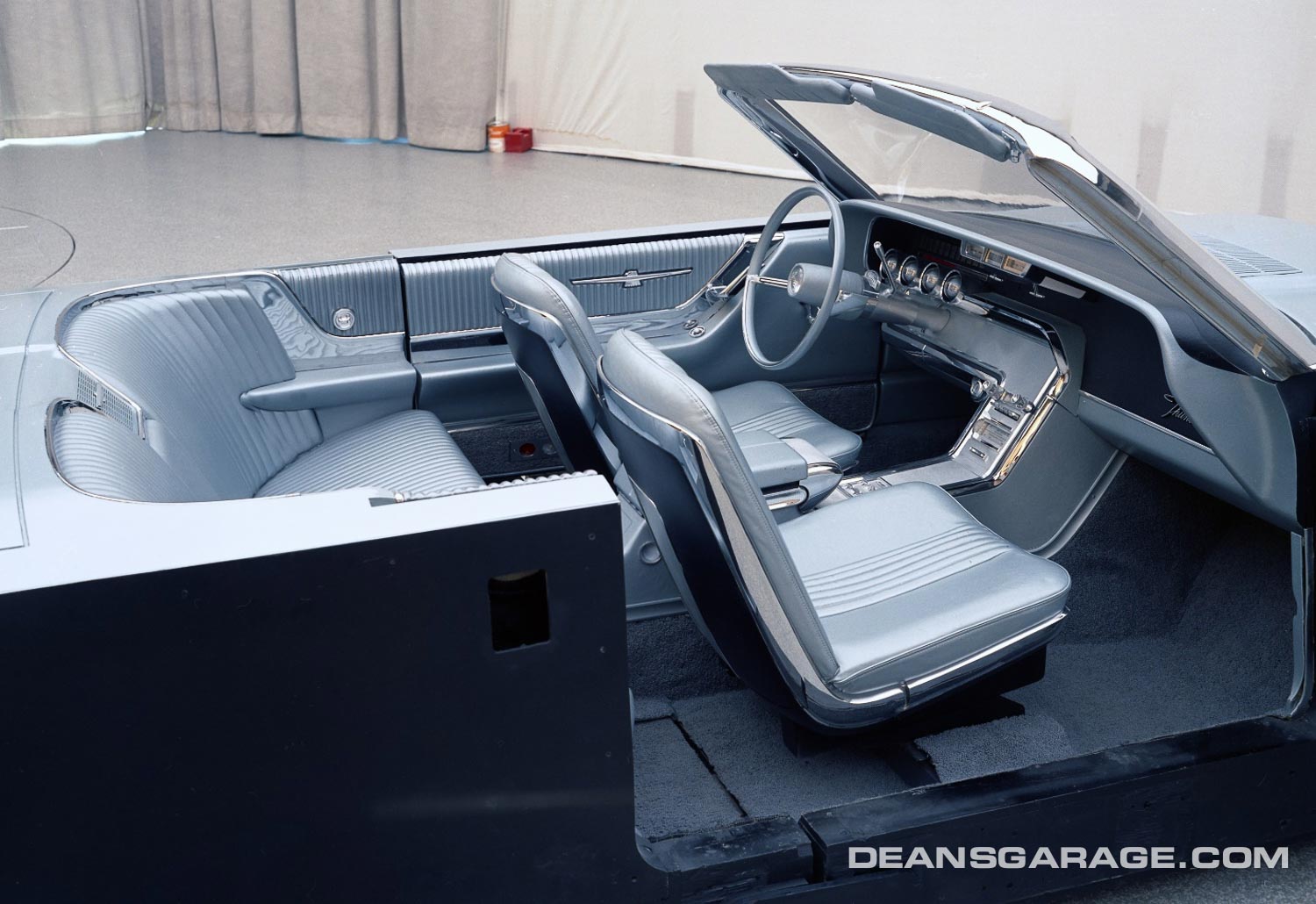
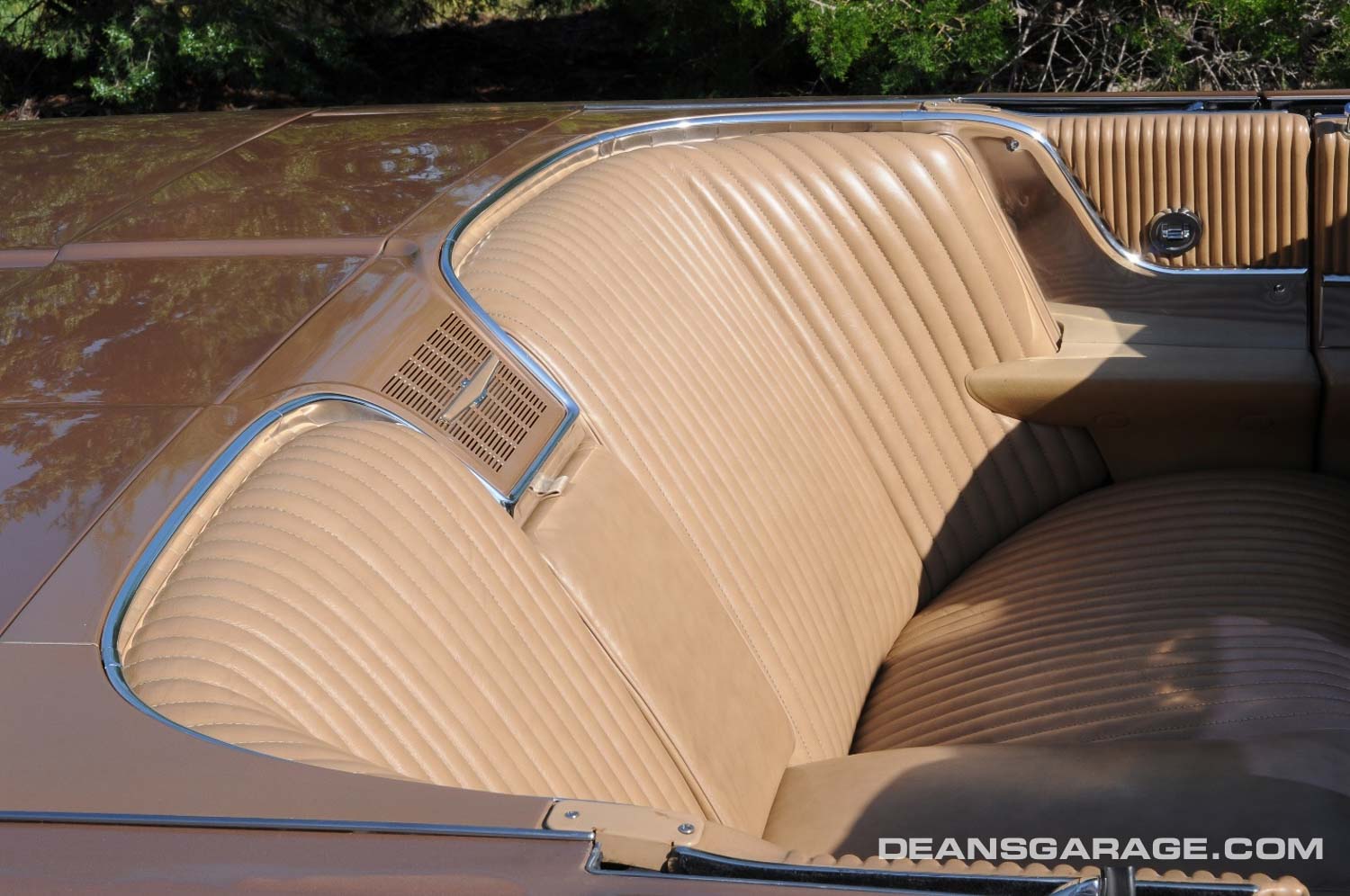
According to Farrell, Halderman and Quinlin designed the instrument panel and cluster while Darden was tasked with finding a solution to making the rear seat wider than previous Thunderbird convertibles. Back seats on ’58-63 convertibles were rather narrow due to packaging constraints between the rear wheelhouses. Darden’s unique coved rear seat allowed room for the wheelhouses and was a full width. It was instantly popular and became a styling element Thunderbird used for years following.
However, the coved back seat nearly didn’t make production because of the complexity of incorporating the curve. The rear seat had to be built in four sections. A seat bottom, center back cushion structure and the two curved sides. Production was worried about the ability to line up the pattern so that it appeared as one whole unit. The solution was to make the pleats vertical, neatly hiding the two joints between the three separate back pieces.
By the time of production the multi-piece rear seat problem was completely solved by placing a retractable arm rest between a separate left and right curved back sections.
Najjar was credited with the elegant polished aluminum door panel trim line which carried through to the quarter panel and up and around the back seat.
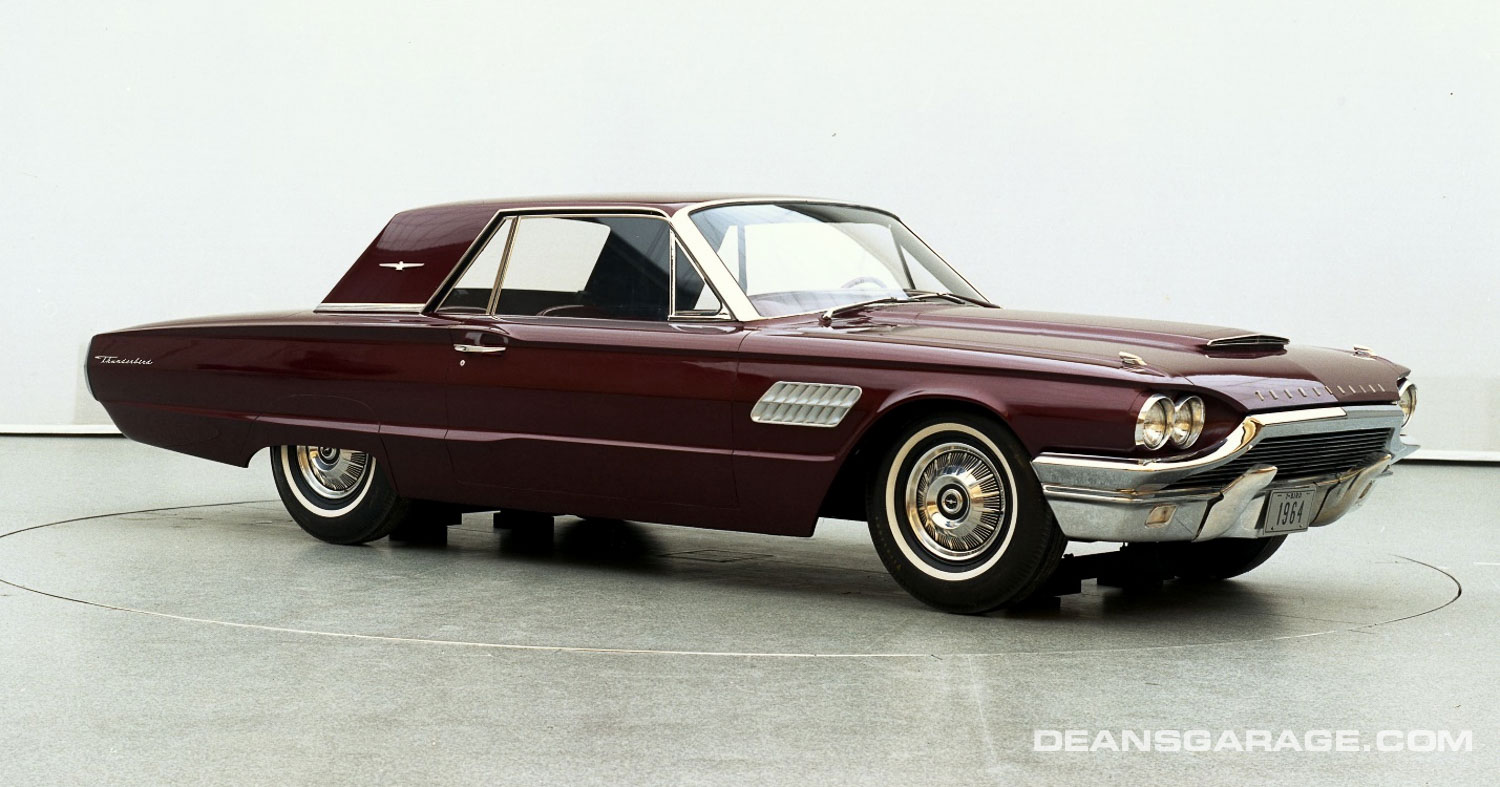
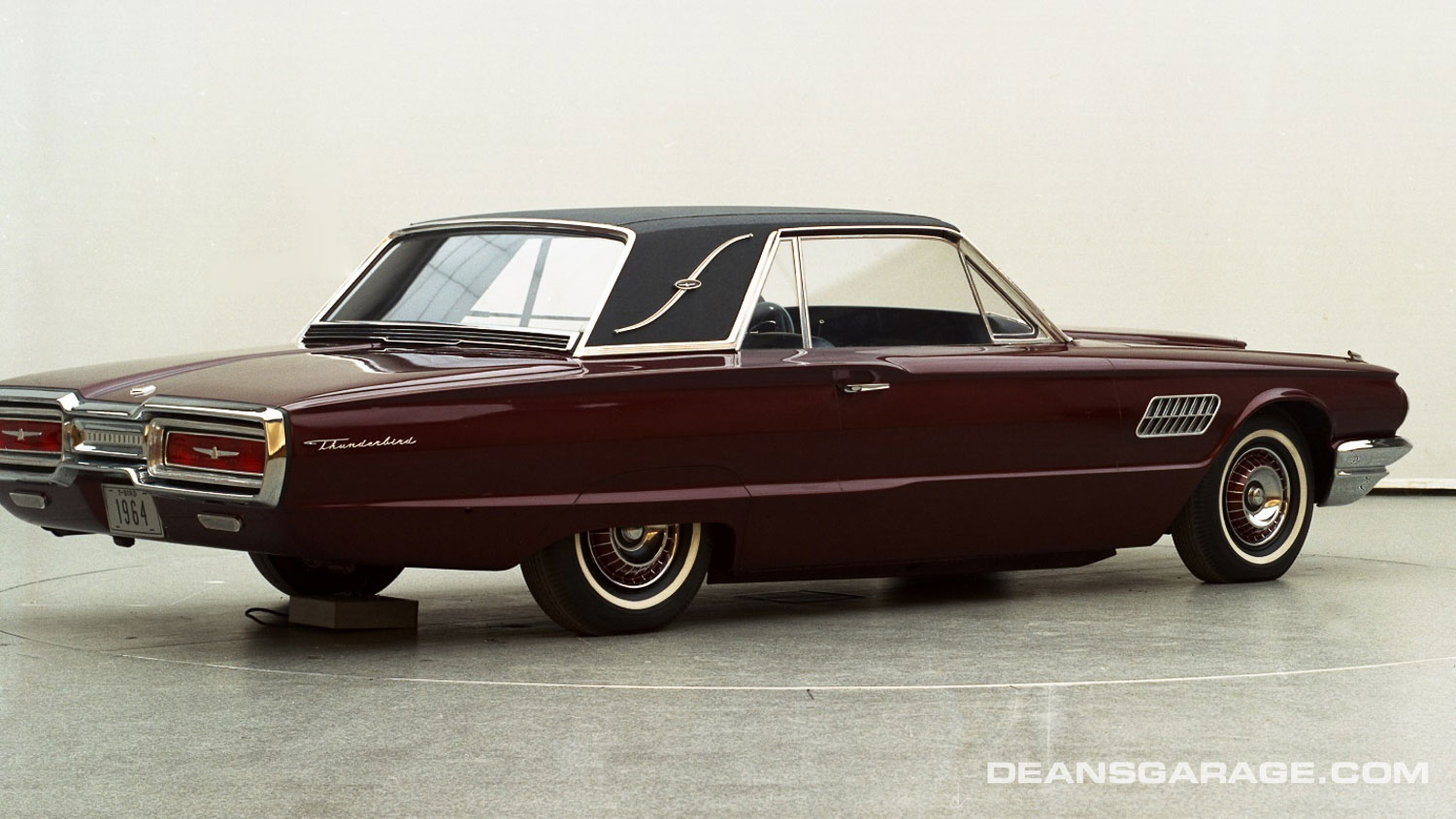
Thunderbird and Lincoln convertibles from 1958 through 1966 utilized much of the complicated mechanism originally developed for the ’57 Ford Fairlane 500 Skyliner retractable hardtop. A smooth surface from seat back to taillight bezel was accomplished by retracting the top into the trunk. This eliminated the need for a conventional boot.
Taken in the Styling Rotunda on a turntable for management review, this Vintage Burgundy fiberglass model is nearing approval.
With the tooling expense of developing a new body for 1964, changes for the ’65s were limited. Sequential turn signals finally got approved from all fifty states. The instrument panel and console had a camera case black finish replacing the brushed aluminum trim. The biggest improvement to the 1965 Thunderbird was the addition of front disc brakes.
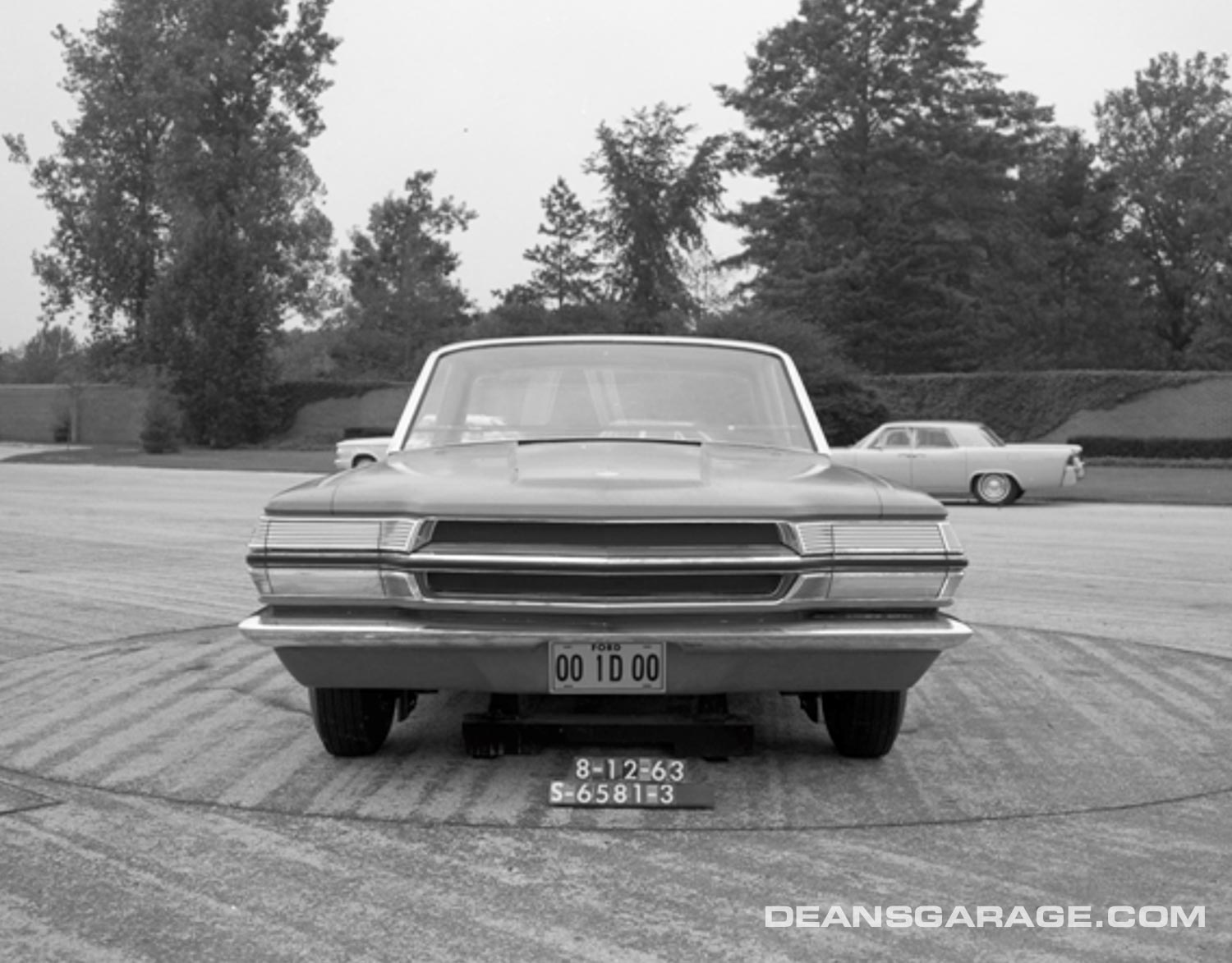
In the first three generations of the Thunderbird, the last year of the three year design cycle received the most significant changes. The same applied to the 1966s. Not much has been found showing the styling progress of the 1966 model, including the redesign of the front and bumper ensemble which is believed to have come out of Dave Ash’s Special Development Studio.
The photo of this proposal, supplied by Ford Design, is included in the Thunderbird development story and features hidden headlights, a blade front bumper, and a painted front valence.
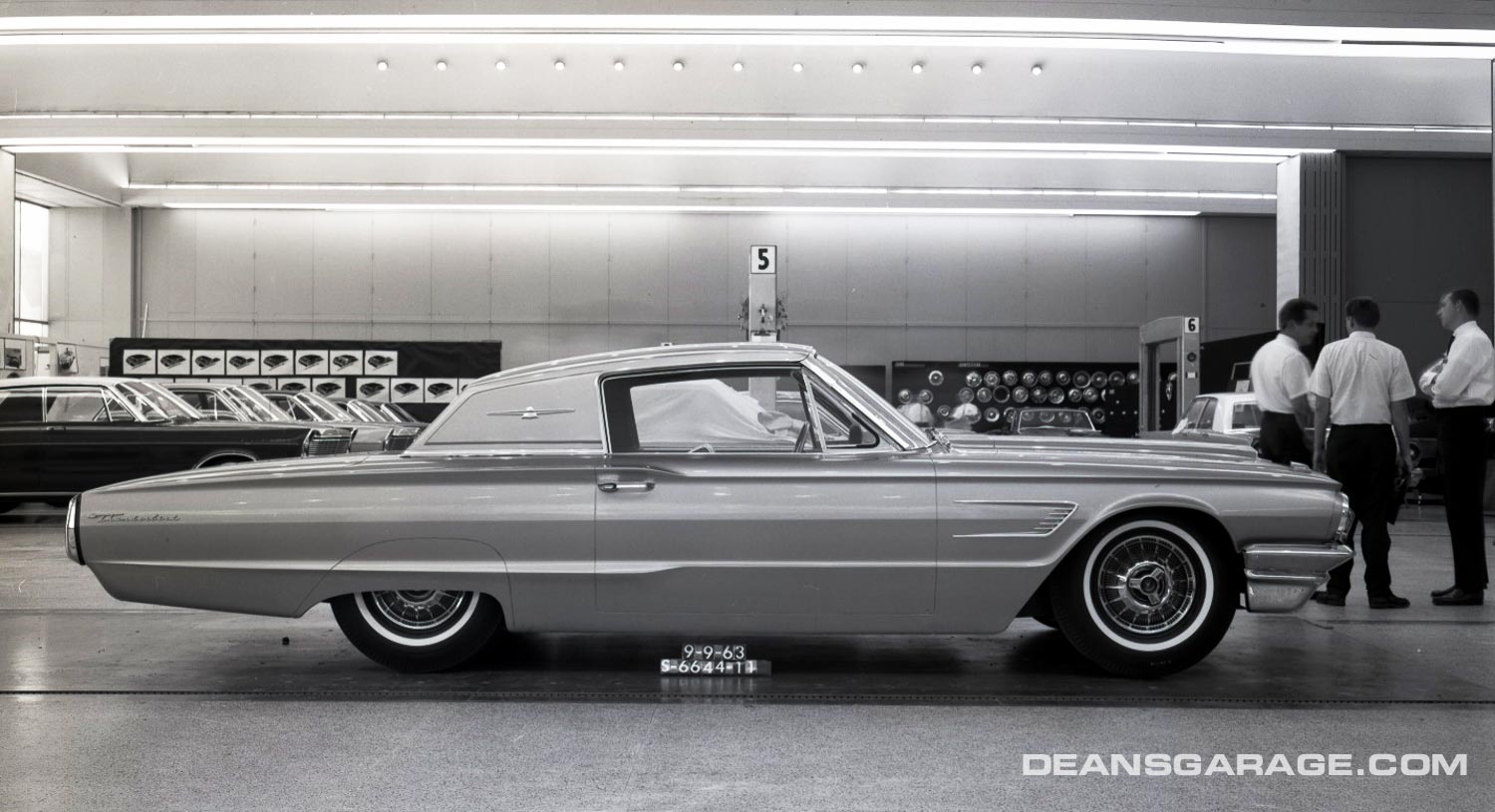
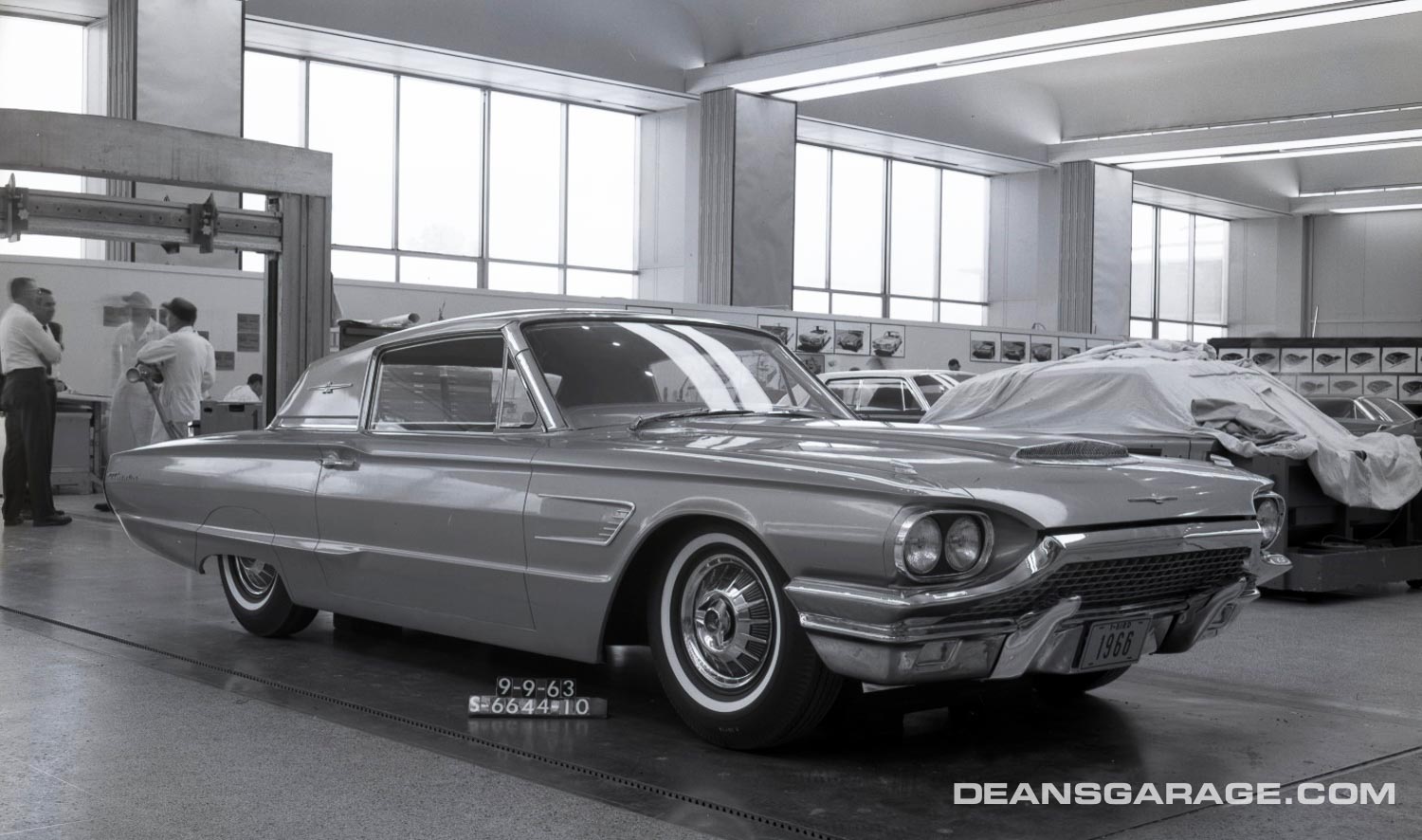
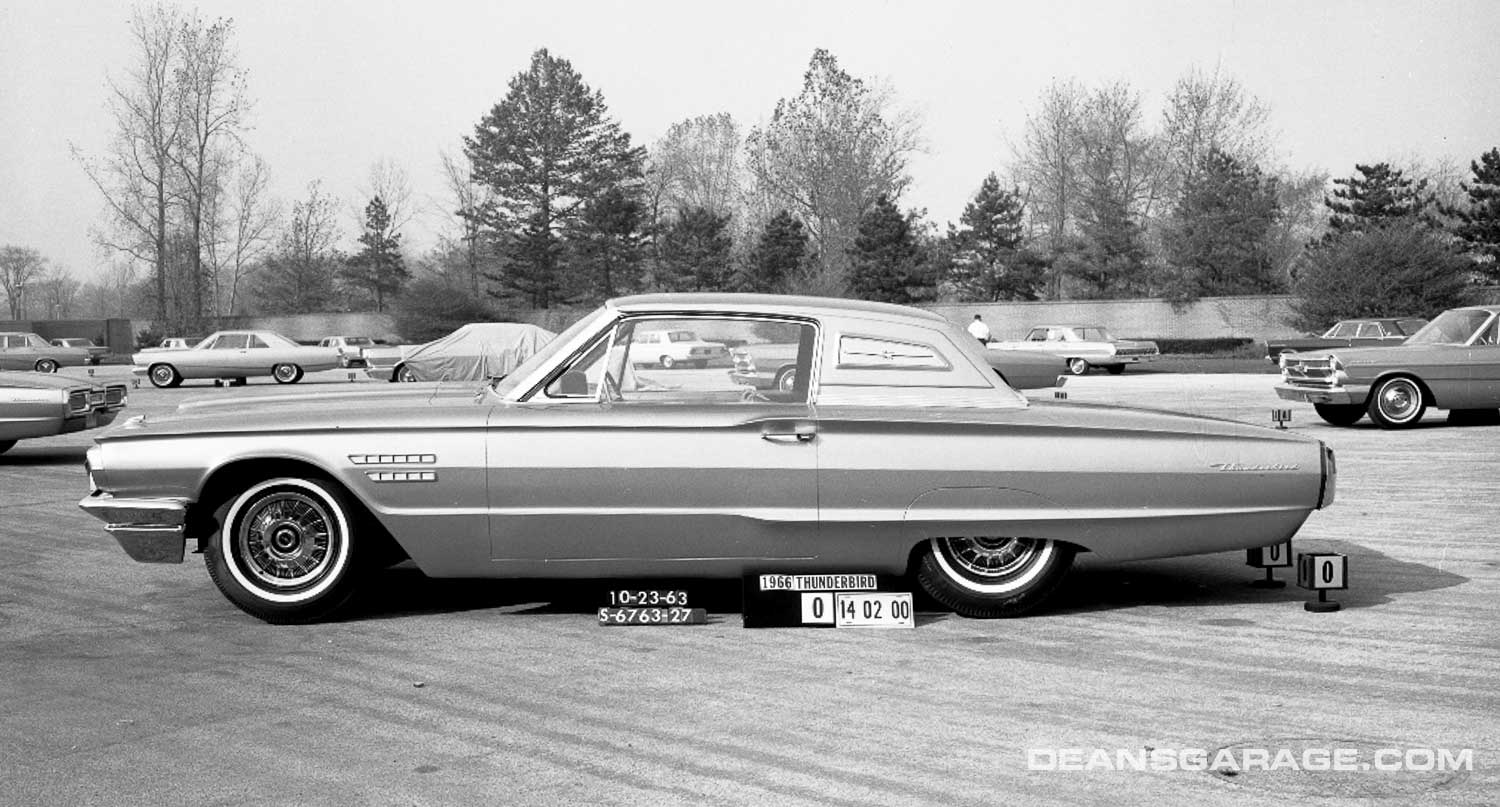
These photos show the removal of the quarter windows and wide “C” pillar for the Town Landau.
There appears to be a raised surface on the “C” pillar. This could be proposal as detail for those cars equipped with a padded vinyl top.

In late 1964 and throughout 1965 Ford previewed the 1966 models with a show car called Palomino. This previewed for the public the upcoming Town Landau roof treatment and the rear design separating the bumper into two sections with taillights. The experimental Wrist Twist steering replacing the conventional steering wheel was also featured. Ford, GM, and Chrysler’s show cars from the era usually included integrated, non-standard headlights. The Palomino featured European French Cibie rectangular lights.
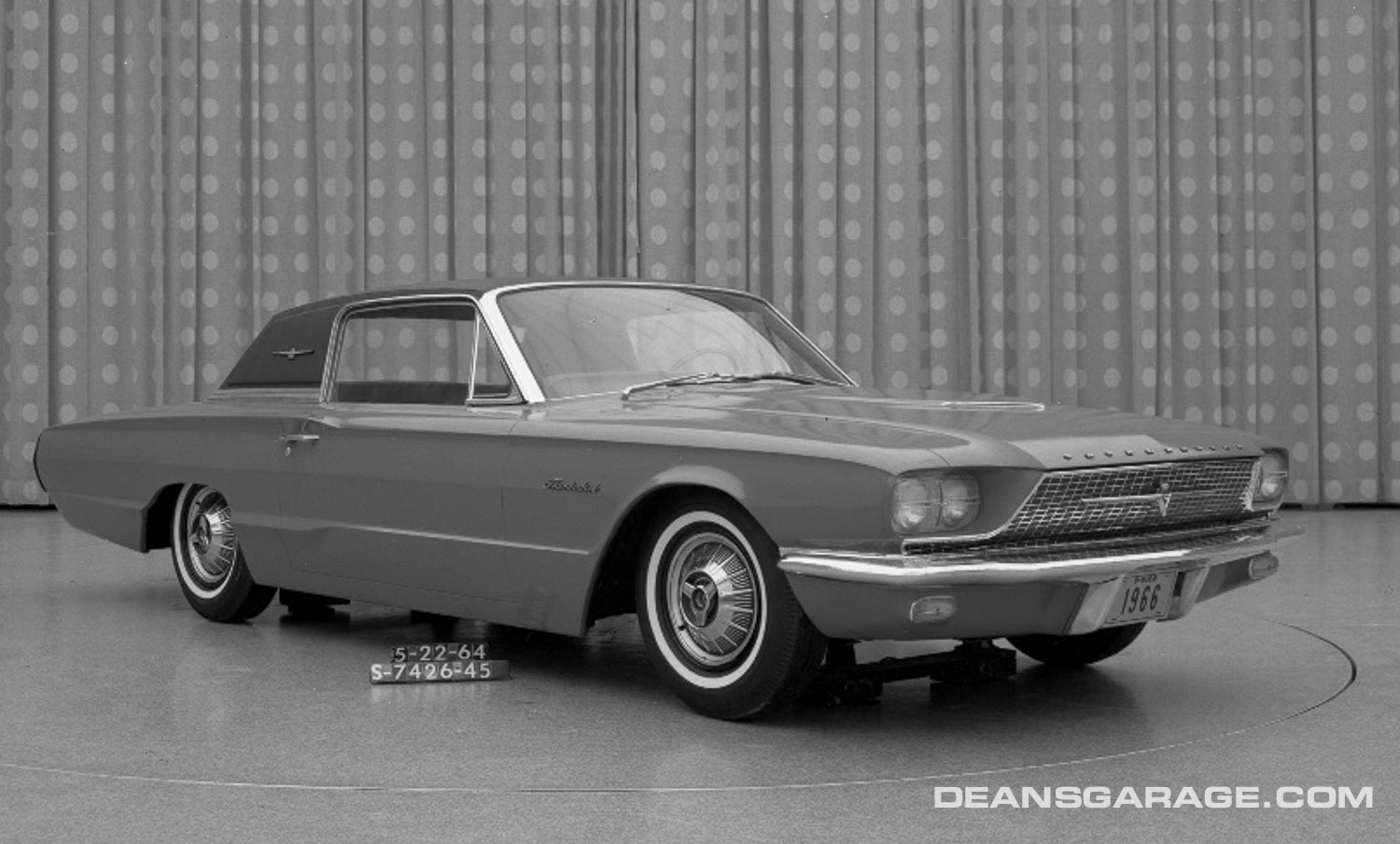
By early 1964, Dave Ash and his team of designers in the Special Development Studio redesigned the front for 1966. This model dated May 22, 1964 is close to production. This model featured glass-covered headlights with Thunderbird logos that didn’t make production. The 1965 Chrysler New Yorker and Imperial headlights were produced with clear headlight covers, and were included with the high-performance 1965 Galaxie 500 with the 427 FE engine.
The new front with the Mustang-like blade bumper and lower valence made the car look lighter and more sporty. And the design met the 1966 federal mandate for common bumper heights.
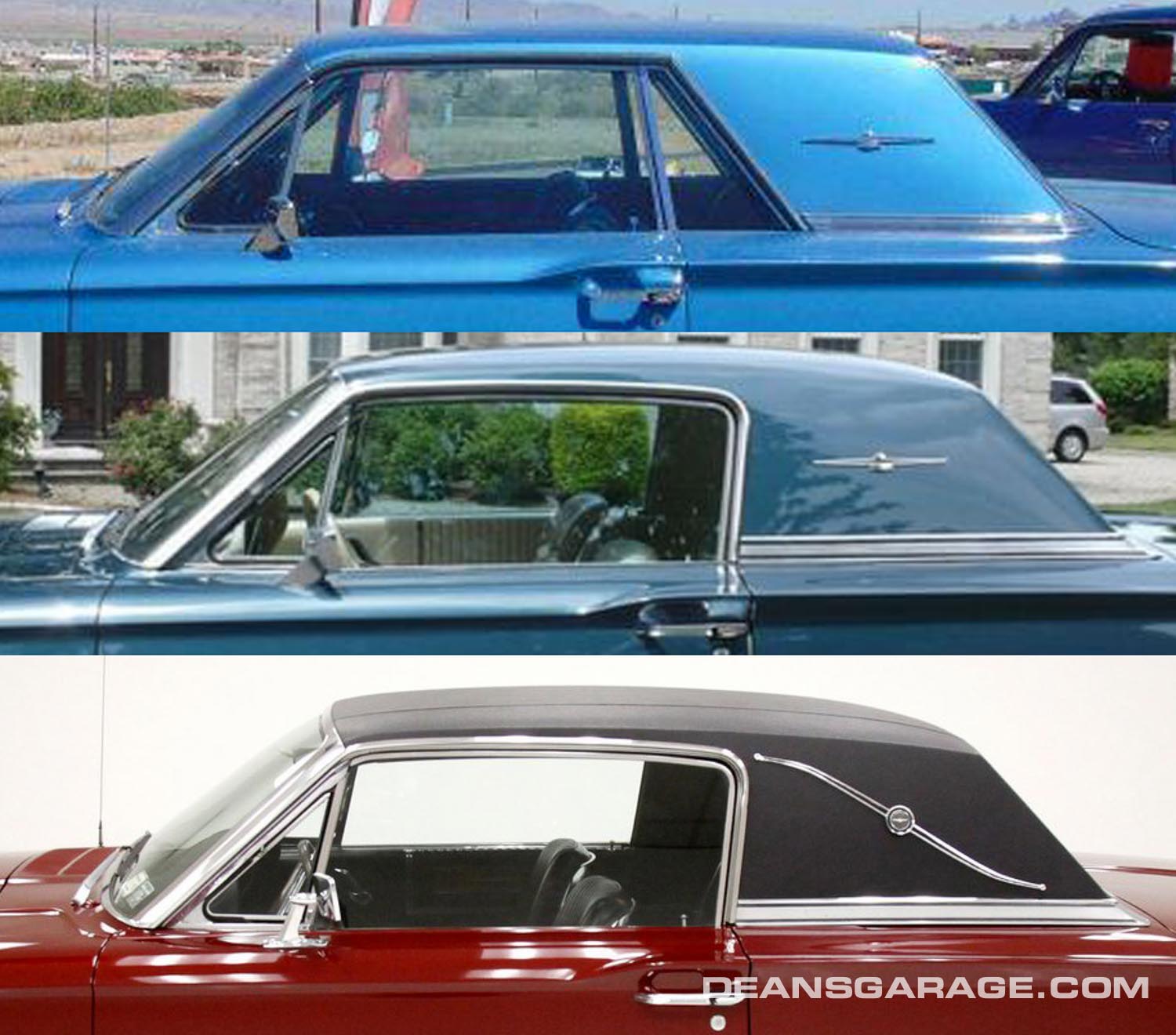
Buyers in 1966 now had three distinct uppers to choose from: The carryover ’64-65 hardtop with quarter windows (with or without a factory-installed vinyl top); the all new for 1966 Town Hardtop with a wide C-pillar and no quarter windows (a vinyl top was not available from the factory); and the Town Landau which was the same as the Town Hardtop with the addition of a factory-installed padded top and landau bars. The Town Landau was a hit and outsold the original hardtop by a little over three to one.
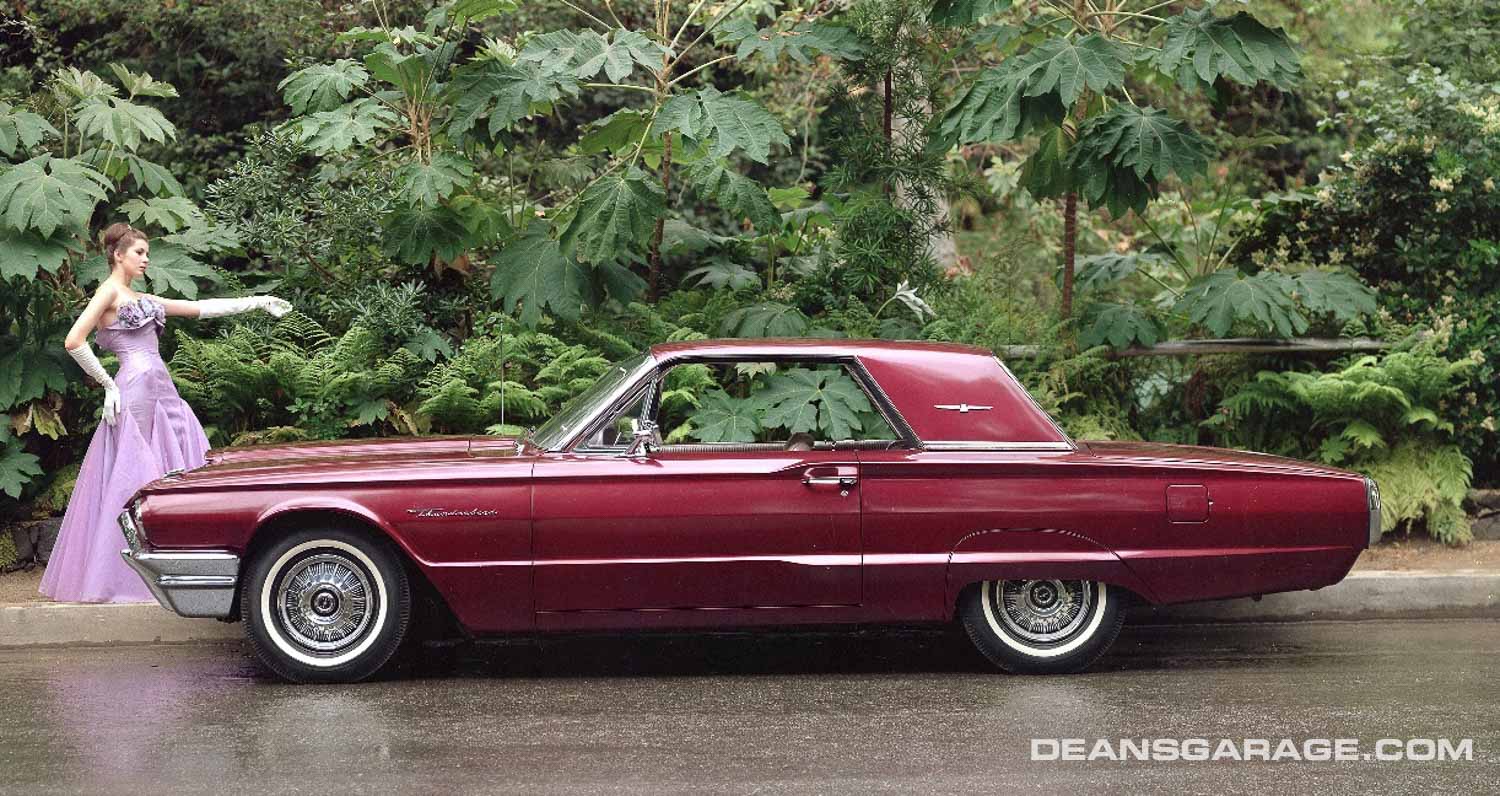
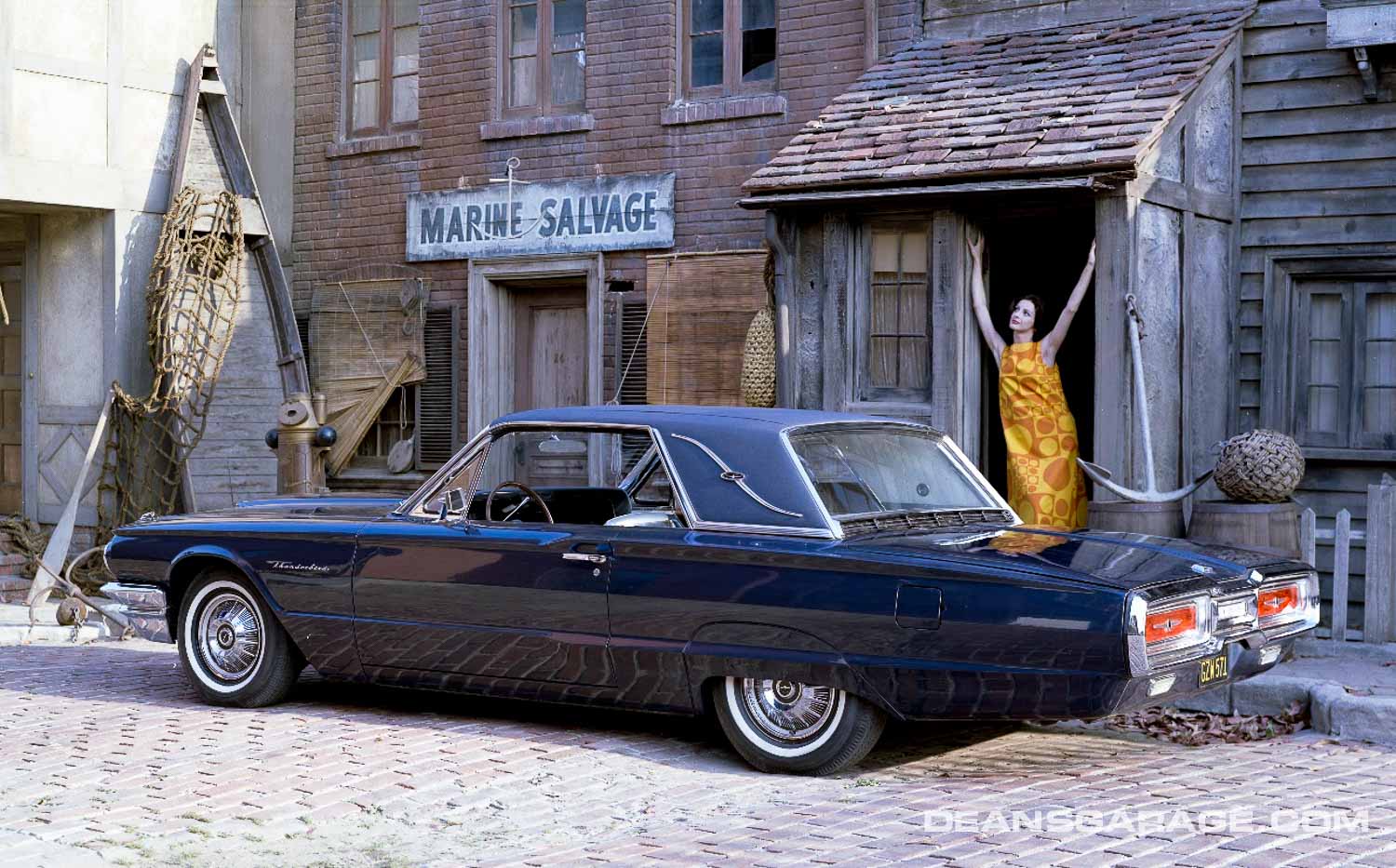
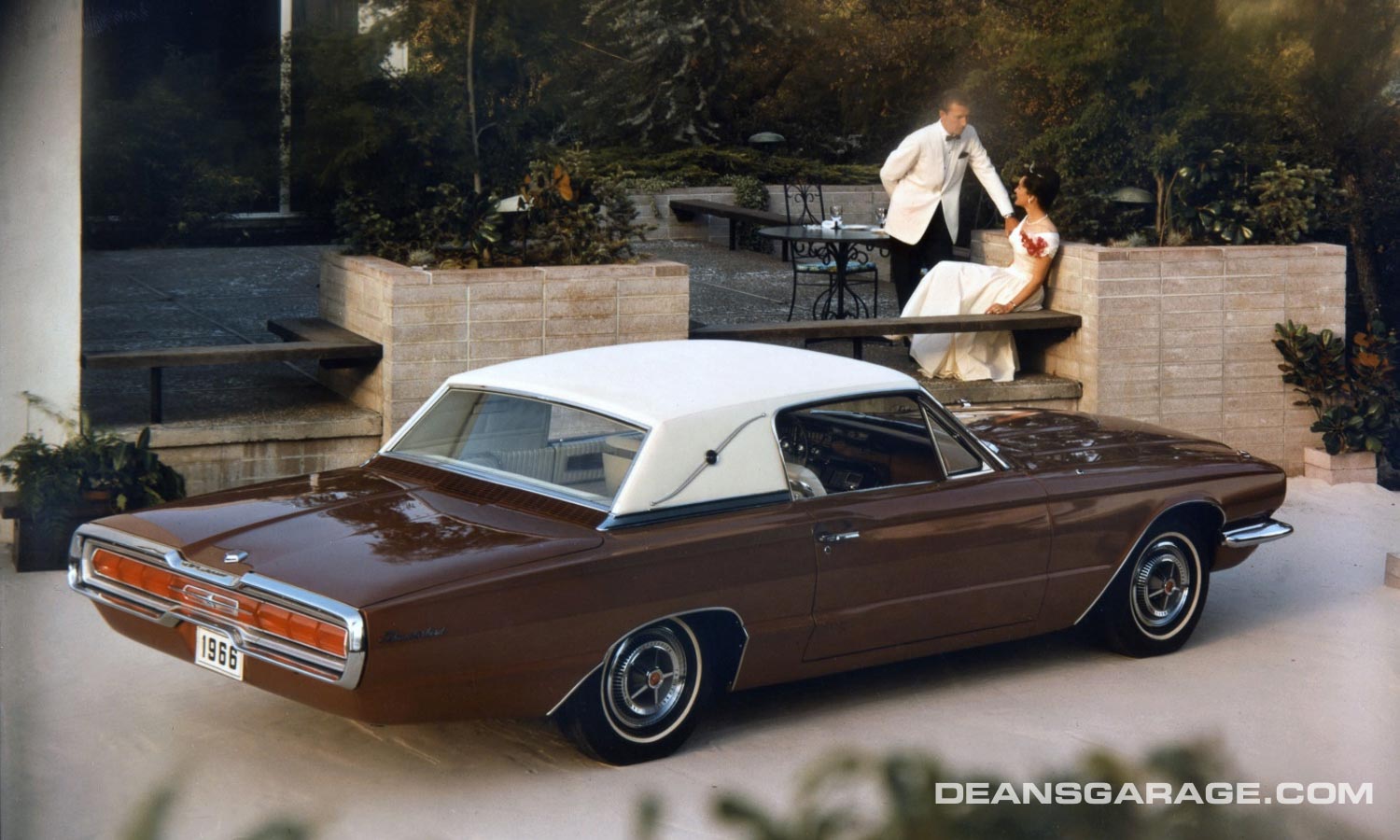
And lastly, this pre-introduction ’66 advertising shot of a Town Landau. As the owner of a ’64 Thunderbird Convertible, I am naturally prejudiced towards what has become to be known as “The Flair Birds.” Proud to own one too, even though I don’t have a white dinner jacket!

Even though I very much like the 1962-1968 Pontiac Grand Prix, the 1963-1968 Buick Riviera, the 1965 Oldsmobile Starfire and 1966-1967 Toronado, none of these cars matched the luxury of the 1958-1966 Thunderbirds. Robert McNamara was right about the desirability of the four-seat Thunderbird, which shows he wasn’t all about economy and utility. Does anybody know what cars were in his ownership when he was the head of Ford, or was he just content to ride in whatever was provided in the motor pool ?
Ever since building the AMT model kits back in the ’60s (I would have been about 10 years old), the ’64/’65 Thunderbirds have held a special place in my heart. Absolutely fabulous cars that looked so terrific! The design around the headlights really does it for me hence the ’66s weren’t as special. Mind you, the ’66 taillights were just outstanding. Full-width for the win! Thanks for publishing two consecutive articles on these amazing-looking Flairbirds. I always appreciate the behind-the-scenes photographs that I’ve never seen before.
As usual, Ford was cutting edge with Thunderbird styling and interiors from 1958 through 1966. Nothing from the competition ever came remotely close! What a tragedy they stupidly trashed all that work with the dreadful Vacuum Cleaner Era (1967-1972) cars that annihilated the Thunderbird and all its marvelous innovations.
I’ve often fantasized about how things would have evolved, had the first Thunderbird continued and the ’58 model appeared branded as the Edsel. All of Ford’s objectives – the demand to maintain production of a sporty car, a 4-place luxury car and a new line to span the mid-priced bracket between Mercury and Lincoln – would have been met.
And then what could Ford have done to resurrect the Lincoln heritage after the outstanding 1956? If they had resisted the temptation to kill the car with tasteless fins, quad headlights and outhouse styling, they would have had an excellent opportunity to beat the hell out of Cadillac and Imperial in the styling department over the next several years. All they would have needed was to improve the car’s body integrity, and Cadillac and Imperial would have been sent straight to the poorhouse.
Isn’t hindsight great?
This was the car that set the TBird’s destiny….as a sedan. A long way from the “personal luxury” concept that the Riviera managed to hold through a number of generations. The interior design was really nice – but unmentioned here was that great under-the-rear-window power ventilation on the hardtop versions. I still don’t know why more “modern” cars don’t have that.
For me its how boomer-grade locked down this site has become. Prancing around the US and don’t tread flag like there’s still freedom, but still plaster every aspect of the site with “alert, content protected”, nice unicorn in a cage we got going here.
JJ
I’m between a rock and a hard place.
For years I never had any content protection, and didn’t care if sites like Hemmings or others copied content. But several months ago I discovered that there were several sites blatantly copying DG content (without giving credit to DG or the copyright holders) using a RSS feed for the sole purpose of generating ad revenue. (There are no ads on DG.) I emailed the sites asking them not to copy the content, but never got a response.
DG publishes far more copyrighted material than it used to from significant sources like GM and Ford. I’m grateful to them to be able to use materials supplies by them, and give them proper credit.
The copyright protection on the site is to protect their materials that DG has permission to publish, but general permission has not been granted. I needed to protect those materials because it is the right right thing to do, and I don’t want the relationship with them to end.
DG content is protected by copyright notices (which in itself won’t amount to much), and I’ve added protection in that content can no longer just be easily downloaded copied and pasted.
The copyright protection is not for Dean’s Garage, but for the original sources, where possible.
I agree with you completely, and I see the inconsistency, but hopefully you’ll understand the issue.—Gary
I am confused by the ’66 pre-introduction “Marine Salvage” photo near the end. It shows a conventional hardtop with rear quarter windows but with landau appliques on the C-pillar like the Town Landau. Is that a proposal that failed to go into production? I can’t recall if I ever saw that in reality.